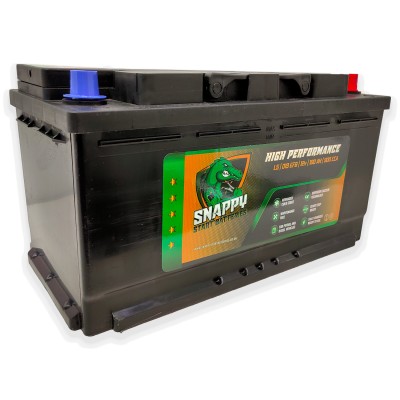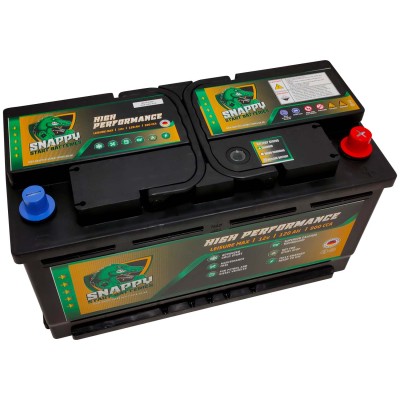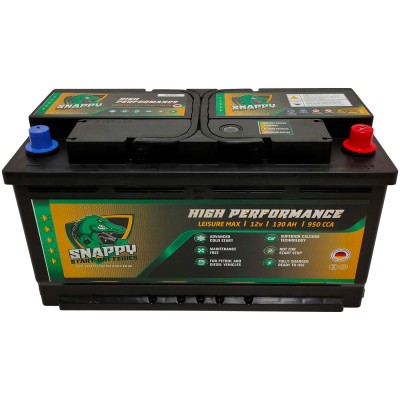The Beginners Guide to Buying a Motorhome Leisure Battery
Every motorhome needs a leisure battery to power appliances and lighting when camping away from an electrical hook-up.
There are many differences between leisure batteries for motorhomes and basic car batteries, and you'll need an appropriate power source that can last for as many days as you require.
We've run through the essential information you need to choose a great motorhome leisure battery, even if this is your first time exploring in a motorhome!
Choosing the Best Leisure Battery for Motorhome Capacity
Leisure batteries are measured in ampere-hours, or AH. You can calculate what size motorhome leisure battery you need by looking at:
- How long you will be using your caravan between recharges.
- The volume of equipment that is powered by your battery.
- How long you intend to have that equipment switched on.
As a rough guide, you can get an indication by checking the label on each piece of equipment you expect to run from your motorhome leisure battery.
Add up the power needed per 24-hour period. For example, if you have two sets of eight-watt lights running for five hours a day, you need 80-watt hours.
Divide that number by 12 to get the ampere-hours you require from your leisure batteries for motorhomes, and you'll have a better idea of your power output.
In this illustration, the lights need 6.6 AH a day, but you'll also need to add water pumps, electrical appliances and your TV.
Charging a Sealed Maintenance-Free Motorhome Leisure Battery
Snappy Start batteries for motorhomes are sealed versions, which means you don't need to top them up with water, and there isn't a filler cap.
It would help if you were careful not to overcharge the battery because it might deplete the electrolyte levels.
It's best to use a voltage-controlled or automatic charger for this type of motorhome leisure battery.
Maintaining a Motorhome Leisure Battery
Even the best leisure battery for motorhome vehicles needs maintenance. As a quick checklist, you should work through these tasks at least once a year:
- Clean the battery tray thoroughly, including the connectors and terminals.
- Lubricate the battery connectors with petroleum jelly.
Our leisure batteries for motorhomes are sealed, so you won't need to worry about removing vent plugs, checking electrolyte levels or topping the battery up with deionised water.
You should also check the motorhome leisure battery charge rate and ensure it has been recharged.
It is much better to recharge slowly over time than to quickly charge a leisure battery at a higher rate.
The guide is to never charge at more than 10% of the battery capacity - e.g. a 60 AH motorhome leisure battery should have a six-amp charger.
Recharging Leisure Batteries for Motorhomes
When your battery is fully charged, you should disconnect it and leave it for four hours before rechecking - it may be necessary to reconnect the charger.
It can take just a few hours to recharge a battery depleted to 75%, but if you have dipped below 50%, it can take a couple of days - you can recharge the battery in 12-hour stints with breaks in between.
Can I Have Two Leisure Batteries for Motorhomes Working Together?
If you have the capacity for a second motorhome leisure battery, you can do so provided:
- There is appropriate safe storage space.
- You have secure fittings to restrain both batteries.
- Each unit has enough outside ventilation.
- The motorhome leisure battery compartment is sealed from the passenger area.
You should also check your motorhome weight capacity since leisure batteries for motorhomes can be very heavy and might tip your vehicle over the maximum load thresholds.
Charging a second motorhome leisure battery before travelling will give you a backup battery, which should remain fairly well charged for some time and won't necessarily need to be connected.
It's best to swap between your leisure batteries for motorhomes once the first unit starts to run low on charge.
Alternatively, you can wire a manual switch to leverage either battery to run the circuit, but be extremely cautious as you can't have two leisure batteries for motorhomes, both trying to power one connection.
You may experience issues if either motorhome leisure battery has a different charge capacity or charge state.
One battery could fully charge before the other, and overcharging can cause overheating or damage.
If you want to have two leisure batteries for motorhomes charging simultaneously, you should invest in a twin battery charger for safety.
Frequently Asked Questions
Below you'll find answers to some of the common questions about buying a motorhome leisure battery for the first time.
Can I Charge a Motorhome Leisure Battery in My Car?
It's best to avoid charging leisure batteries for motorhomes in your car if you can avoid it.
In the past, it was normal to store a motorhome leisure battery in the boot and charge it from the alternator.
However, these battery boxes are no longer available as they pose a health and safety risk related to the potential for acid leakage and gas emissions.
What is a Self-Discharge Rate in Leisure Batteries for Motorhomes?
Even if you have the best leisure battery for motorhome vehicles, and it is 100% charged, it will start to deplete over time without anything attached.
When left at room temperature, a modern battery loses about 0.1% to 0.2% of charge per day.
Therefore, we always advise you to monitor your motorhome leisure battery charge rate and keep an eye on the self-discharge rate before you head out on a trip.
Can I Leave a Motorhome Leisure Battery Continuously Charging?
Possibly, yes, if you have a trickle charger that can slowly keep the charge topped up over longer periods.
Some caravan owners like to store their motorhome leisure battery in situ and leave it charging throughout the winter - but this isn't usually ideal.
It's important to check which types of leisure batteries for motorhomes you have since some require a rest period before recharging.






















































































